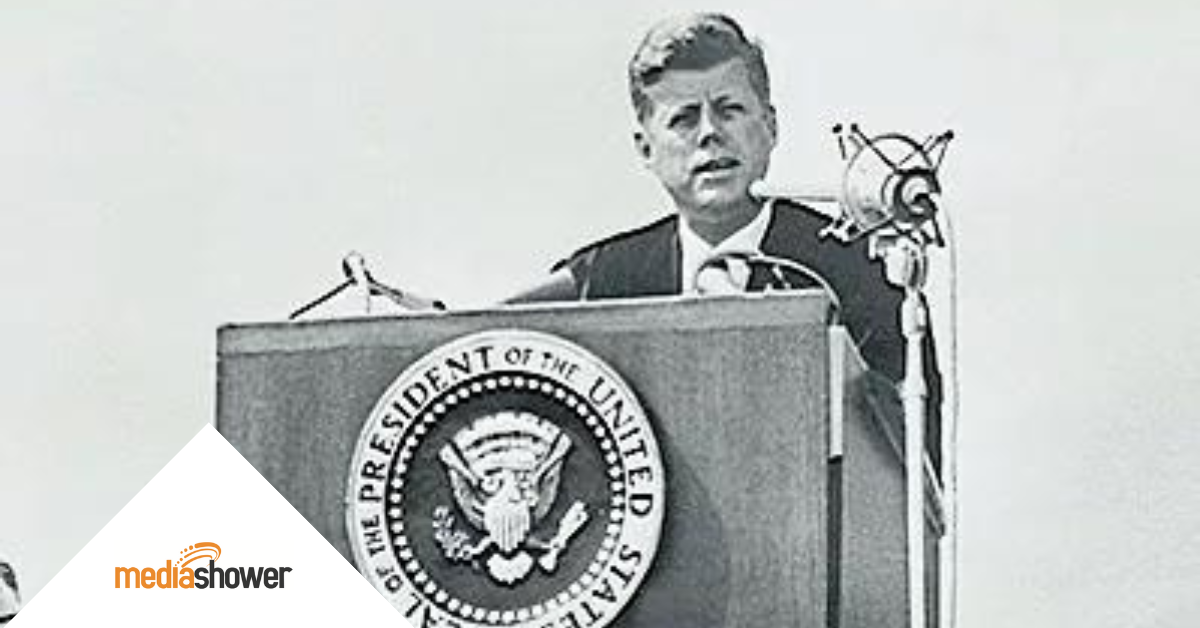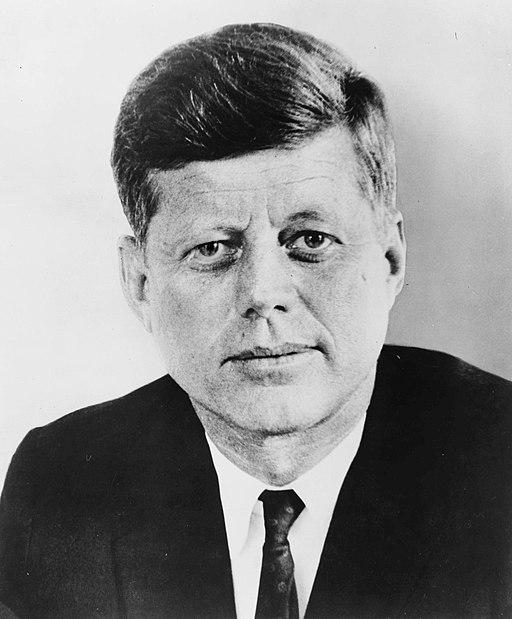
- TLDR: In his commencement speech to the American University, Kennedy delivered a message of peace not only to attendees but also to the Soviets and the world. He identified a shared desire for peace and used inclusive language to promote an ideal where the American and Soviet people could co-exist peacefully.
- So What? Audiences expect a level of consideration and respect; part of that is honesty. In communication, you can extend your understanding to your audience, but if you can’t maintain your values, whether as an individual or a brand, they will see right through it.
Delivered on June 10, 1963, John F. Kennedy’s so-called “Peace Speech” signaled a shift in American attitudes towards the Cold War. After years of escalating tensions, including the terrifying Cuban Missile Crisis the previous year, many on both sides sought a way to stand down from the brink of war.
In this speech, Kennedy works towards peace by using communication techniques that readers of this blog will find familiar – namely, using everyday language and identification to build a rapport with the listener. This common ground is key to Kennedy’s effectiveness as a communicator, and provided a way for both sides to cool off the tension of the Cold War.
Using Peace to Disarm Hostility
Peace can be a challenging topic during times of hostility. When fear and paranoia rule the common discourse, communicators might struggle to help people find a common ground.
Fortunately, Kennedy was willing to take a step back, rhetorically, to speak to the higher purpose of peace:
“I have, therefore, chosen this time and this place to discuss a topic on which ignorance too often abounds and the truth is too rarely perceived–yet it is the most important topic on earth: world peace.
What kind of peace do I mean? What kind of peace do we seek? Not a Pax Americana enforced on the world by American weapons of war. Not the peace of the grave or the security of the slave. I am talking about genuine peace, the kind of peace that makes life on earth worth living, the kind that enables men and nations to grow and to hope and to build a better life for their children–not merely peace for Americans but peace for all men and women–not merely peace in our time but peace for all time.”
Here, Kennedy offers a powerful olive branch: the denial of “Pax Americana,” or American domination of the world. (A powerful lesson for many politicians today!)
In doing so, he seeks to assure his counterparts in the Soviet Union that there is another path forward and that he would seek it. This path is one where both countries can co-exist.
Then he puts a finer point on it:
“Some say that it is useless to speak of world peace or world law or world disarmament–and that it will be useless until the leaders of the Soviet Union adopt a more enlightened attitude. I hope they do. I believe we can help them do it. But I also believe that we must reexamine our attitude–as individuals and as a Nation–for our attitude is as essential as theirs. And every graduate of this school, every thoughtful citizen who despairs of war and wishes to bring peace, should begin by looking inward–by examining his attitude toward the possibilities of peace, toward the Soviet Union, toward the course of the Cold War and freedom and peace here at home.”
Kennedy does not point the finger at the Soviet Union, he points the finger at the nation, challenging his listeners to examine their attitudes, and to nurture their desire to bring about peace. It was a brave message for a politician to deliver.
Most politicians take the easy way out: dividing the world into “us” vs. “them,” and assuring their followers that we are the good guys, and they are the bad guys. Kennedy turns this trope on its head, asking American citizens to turn their gaze inward, to examine their true intentions.
Only when enough of us desire peace, he says, will peace be possible.
Developing a Shared Purpose

Kennedy connected Americans and Soviets through a shared commitment to peace. He says:
“No government or social system is so evil that its people must be considered as lacking in virtue. As Americans, we find communism profoundly repugnant as a negation of personal freedom and dignity. But we can still hail the Russian people for their many achievements–in science and space, in economic and industrial growth, in culture and in acts of courage.
Among the many traits the peoples of our two countries have in common, none is stronger than our mutual abhorrence of war. Almost unique among the major world powers, we have never been at war with each other. And no nation in the history of battle ever suffered more than the Soviet Union suffered in the course of the Second World War.”
Instead of feeding the flames of mutual distrust, Kennedy focuses on the shared desire for peace. While acknowledging that the Soviet Union has flaws, he also points out their achievements – and finds common ground in our mutual desire for peace.
This call is something we can all recognize and use in our daily communication–the realization that we have the power to either burn bridges, or to build them. When we build bridges, even with those whom we find difficult, we build a better world.
Kennedy punctuates this idea with the following statement:
“Our interests converge, however, not only in defending the frontiers of freedom but in pursuing the paths of peace. It is our hope– and the purpose of allied policies–to convince the Soviet Union that she, too, should let each nation choose its future, so long as that choice does not interfere with the choices of others. The Communist drive to impose their political and economic system on others is today’s primary cause of world tension. For there can be no doubt that, if all nations could refrain from interfering in the self-determination of others, the peace would be much more assured.”
Here, Kennedy continues articulating shared values, while reminding listeners that global communism was working to destabilize other nations as part of an international program. Walking this tightrope was Kennedy’s daily job.
Build Bridges, Don’t Burn Them
It’s this balance of honesty and relationship-building where Kennedy demonstrates his mastery of communication.
While acknowledging the shared tension between the US and the USSR, he also pushes for a shared commitment to peace between the two countries, starting with every American citizen.
While it’s so easy to burn bridges in our communication, Kennedy showed that it’s much better to build them.
If you need help crafting an authentic message that resonates powerfully with your target audience, Media Shower knows how to help. Marketers, meet your master plan.
